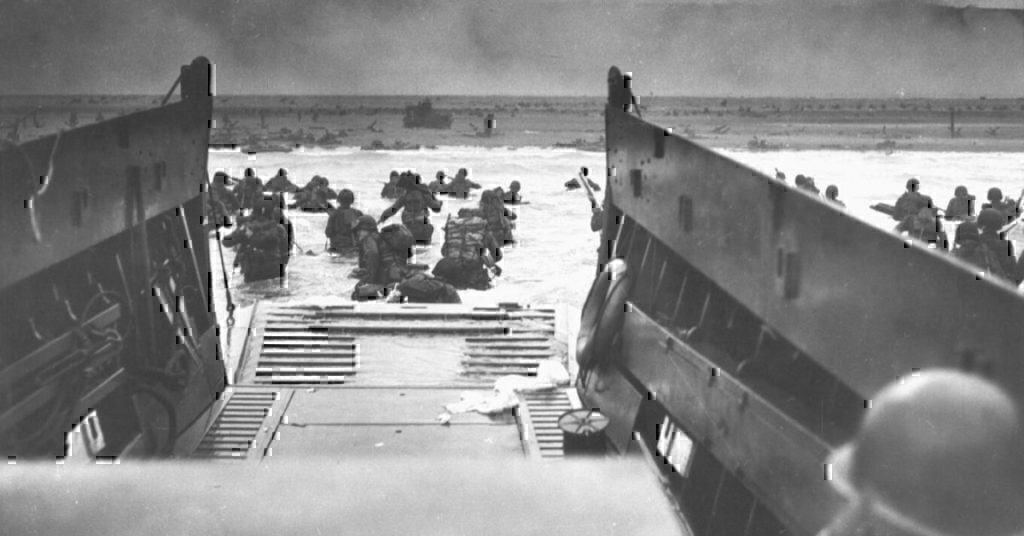We are fortunate for the opportunities to joyfully explore the beauty of Europe, free of fascism, because of the bravery and sacrifices of hundreds of thousands of Allied forces.
Visiting France for the first time as an 18-year-old from the Midwest was a trip I will always treasure. After spending several days in and around London. I was ready to put my high school French to the test, and immerse myself in the French culture. I traveled by train from London to the southern coast to board a ferry to Northern France.
As the ferry got further away from the English coastline, the gray skies began to clear and I could see France in the distance. There was a subtle breeze blowing across the English Channel, which created a serine feeling. When the ferry slowed, signaling the final moments of the ride. I gazed at the beauty before my eyes. The lush green fields and trees on top of the slopes leading onto the beaches looked like a slice of heaven.
My first few steps in France were ushered in by the smell of freshly cut flowers being sold on the street. It was only a matter of minutes before the pastel hues of the flowers and landscape revealed their inspiration for the birthplace of Impressionism. For a moment, I felt I had been transported into a Manet painting.
Turning back around to look at the English Channel, I was overcome with an eerie stillness. It had been 55 years since Allied forces stormed the beaches of Normandy, France on June 6, 1944, known as D-Day.
There were two contrasting French coasts viewed by an 18-year-old in 1999, and an 18-year-old in June of 1944. In those waters off the French coast, thousands of Americans boarded transporters that resembled an open-air commercial sized dumpster on water. There were young men from every corner of the country, split between the transport boats. On some of those small boats there were 18-year-old boys, who had never traveled far from home until that moment.
It’s likely they weren’t focused on the beautiful scenery they were about to disembark upon. Their final thoughts before stepping down the ramp into the choppy waters of the Channel weren’t of eager anticipation to sample the French cuisine, or leisurely strolls through street markets of small French villages. They were of their families back home, who were unaware of the impending horror their loved ones were about to endure, or unaware that by the end of the day, history would change course. Within hours, thousands of American families would be forever changed. Sons, brothers, husbands and fathers would meet their destiny on the shores of Northern France.
At the top of those slopes leading to the beach, Nazi forces opened fire on the thousands of Allied forces storming the beaches. Suddenly, dreams of owning a home or business paled in comparison to the hope of surviving long enough to feel the grass beneath their feet as they continued the bloody campaign inland.
For the American GI’s lucky enough to survive long enough to reach the sandy beaches. The water washing ashore was bright red. It became impossible to tell if the blood shed by Allied forces had overtaken the waters of the Channel.
If a famous Impressionist artist like Cezanne were to capture the moment in a painting, the landscape in the artwork would be void of any gentle pastels. Instead, grey, brown and red would capture the ominousness of the harrowing invasion.
Before the horror besieging the shores, the dark, early morning sky was littered with planes depositing thousands of American paratroopers scattered throughout Normandy. Many planes were shot from the sky as paratroopers leaped from them. Some blasts were so violent they knocked weapons out of the paratroopers’ possession. For those who landed safely on the ground, many found themselves alone in a foreign and hostile land. As they dodged German fighters, paratroopers began to link up to form a stronger offensive force.
The invasion took years to plan, and careful coordination between American, British and Canadian forces comprised of over 150,000 troops. Among the 150,000 troops, 14 Comanche “code-talkers” relayed critical messages in their Native American tongue, which German forces were unable to translate.
By the end of June 6,1944, the Germans had been bombarded by air, land and sea from Allied forces. The Atlantic theater began to shift from Nazi control of Europe to a liberated Western Europe. More than 4,000 Allied troops lost their lives in the D-Day invasion.
The success of D-Day was the turning point, and beginning of the end for the Nazis.
In the 76 years since D-Day, millions of people have blissfully explored the rich history, beauty and diverse cultures of Europe. It was the bravery and sacrifices of hundreds of thousands of Allied forces on D-Day that helped save the world.
I was privileged to experience all the beauty Europe offers as an 18-year-old, because thousands of 18-year-olds on June 6, 1944 had the courage to face evil directly in the face.


